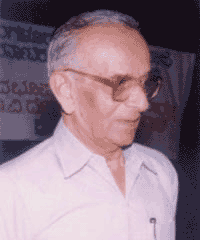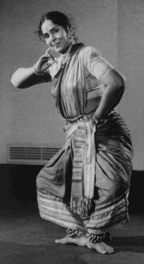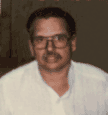NEWS & NOTES

Symposium on navarasa -SULOCHANA SARALAYA
The 8th Annual symposium conducted by the B.V.K. Sastry Memorial Committee focused on navarasa in Indian classical dance. The annual day-long feature, conducted at the Bangalore Gayana Samaja recently, was highly educative. Music, painting and dance were the subjects of the symposium as BV.K. Sastry (BVK) reviewed all three in Deccan Herald and Prajavani for nearly five decades.
One of the chief guests, G.N. Ranganath Rao (a senior journalist), speaking on the occasion, said that creating awareness and appreciation for the fine arts in the minds of ordinary people was BVK’s greatest contribution. V.N. Subba Rao (President, Karnataka Media Academy) said that BVK was a mine of knowledge.
The keynote address on “Rasa in Dance” presented by veteran art critic S. N. Chandrasekhar who threw light on how a dancer creates bhava and transmits it to the audience in such a way that rasa is produced in an appreciative audience. It was followed by lecture demonstrations on “Navarasa in Classical Dance” by Manju Bhargavi (Koochipoodi), Anuradha and Sridhar (Bharatanatyam), Nandini and Murali (Kathak) Bijoyini and Surupa Sen (Odissi) and Usha Datar (Kathakali).
Manju Bhargavi briefly explained the navarasa and demonstrated it through traditional Koochipoodi items.
COVER STORY
The Chennai Season 2007-08
Mornings dedicated to past greats- MEENAKSHI GANESH
AT THE MUSIC ACADEMY
The Music Academy’s morning lecdem sessions began on 16th December 2007. At Sangeeta Kalanidhi designate Palghat Raghu’s suggestion the sessions were dedicated to past masters, starting with the late R.K Venkatarama Sastry, the violinist whose centenary was celebrated in November. Dr. Padma Murthy who learnt music from the great vaggeyakara Mysore Vasudevacharya, presented some of his rare kriti-s. A varnam in Nalinakanti was followed by kriti-s in Vasanta, Pushpalatika (Guru kripalekhasree) and Sankarabharanam/Adi (Nannubrochutaka).
The second day of the conference was dedicated to the memory of Tanjavur Vaidyanatha Iyer. J. Venkatraman accompanied by Rukmini (violin) and R. Ramesh (mridanga) presented a pallavi in raga Nalinakanti, set to Tisra Triputa tala in misra nadai. The total number of beats was 98 — 56 in the poorvanga, and 42 in the uttaranga. “Mamaruti namostutey” was the phrasing used for the pallavi.
The third day was dedicated to Turaiyur Rajagopala Sarma who composed several padam-s and varnam-s extensively used in dance. V.P. Dhananjayan introduced the dance form of Kerala Natanam, an amalgam of Kathakali, Mohini Attam and Bharatanatyam. Vinaya Chandran presented the dances along with his students. Distinct instruments were used for Kerala Natanam like the edakka, murichenda, maddalam apart from the flute, violin and mridanga. All the mudra-s are taken from the Hastalakshana Deepika, and nrityanjali, swaragati, ekanka-abhinaya and padam are normally presented.
SPECIAL FEATURE

Bala, queen of abhinaya
The legendary dancer T. Balasaraswati passed away on 9th February 1984. NANDINI RAMANI, one of her seniormost disciples takes Sruti readers down memory lane.
The occasion has inspired me to share a few thoughts on her in this magazine, in which exactly 23 years ago, Gowri Ramnarayan interviewed me as a prime disciple of the legend (Sruti 5, February 1984). With Bala’s departure from the scene, the era of unshakeable, deep rooted faith in sampradaya, higher goals of art and utmost submission to the concept of the guru, have withered away. She was an inimitable exponent of nritta and the queen of abhinaya. Sangeeta Kalanidhi, Padma Bhushan, Padma Vibhushan, Isai Perarignar, Sangeeta Kala Sikhamani, Desikottama, these are the many honours my revered teacher T. Balasaraswati received in her illustrious career. This year marks her 23rd death anniversary.
For Bala, her art was her life. Her devotion to her guru Kandappa was supreme. Her goal in life was to maintain her guru’s tradition in all its purity and dignity. She dare not change anything of her guru’s training. She was in awe of him and would not touch a ‘tattukazhi’ saying, “My mentor is qualified to do so, not me”. Such was her total reverence for her teacher. Similarly, she had deep affection for her teacher’s son, K. Ganesan, who came under Bala’s care as a young boy and started accompanying her in her performances at a crucial moment in 1958 on the instructions of her mother T. Jayammal.
At 57, I look back through the decades of my association with this legend of Bharatanatyam. My father Dr. V. Raghavan gave my sister Priyamvada (the first disciple of Bala at the school run by the Madras Music Academy), and me, immense opportunities to come under the wing of this great artist.
OBITUARY

A TRIBUTE
KMBC’ Krishnamurthy, Founder of a musical landmark - SRIRAM.V
T. S. Krishnamurthy, founder of the Karnatic Music Book Centre — a unique establishment in Chennai, passed away on 7th January 2008. He ran the business with passion and involvement, always more interested in the propagation of music awareness rather than on the bottom line.
In the world of Carnatic music books, the name of A.S. Panchapakesa Iyer is well known. The younger brother of Sangeeta Kalanidhi Alathur Srinivasa Iyer and a vidwan and guru in his own right, he pioneered the concept of publishing books ranging from beginners lessons to varnam-s. These, which came out initially in Tamil and later in English, became very popular. Krishnamurthy had a role to play in popularising them. He was the brother-in-law of Panchapakesa Iyer, his sister having married the musician. Later, he also became the vidwan’s son-in-law. Krishnamurthy worked in the corporate world as did his elder brother Balu, a staunch bachelor who had enough time to devote to any good cause he felt was worth his while. The two, visiting the Tyagaraja aradhana in Tiruvaiyaru in the 1960s, felt that it was a good spot to market the books of Panchapakesa Iyer. They set up a stall at the venue in 1968 and found business to be brisk. Encouraged, they returned year after year and in 1978 Krishnamurthy decided to set himself up in the book trade with Carnatic music books as his sole line. The Karnatic Music Book Centre (KMBC) came up as a result and within a few years, the tiny shop tucked into a by-lane off Sripuram 1st Street in Royapettah became a landmark and a treasure trove for any researcher into Carnatic music.


